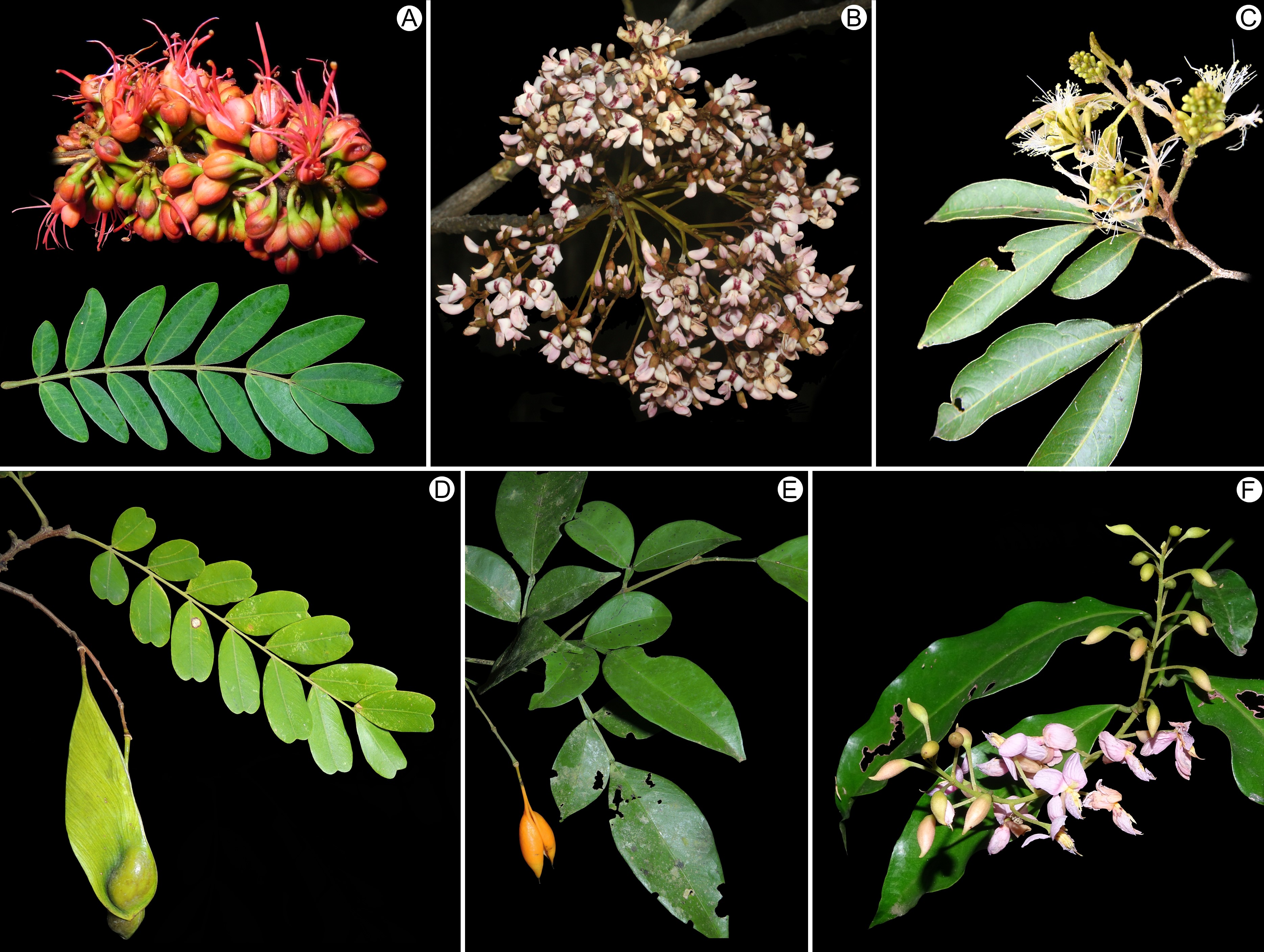TWO HUNDRED YEARS OF BOTANICAL RECORDS: LEGUMINOSAE TREE SPECIES DIVERSITY IN A BRAZILIAN ATLANTIC FOREST HOTSPOT
DOI:
https://doi.org/10.24823/ejb.2024.2012Keywords:
Biological collections, Conservation, Fabaceae, Floristic similarity, Reserva Biológica do TinguáAbstract
The Reserva Biológica do Tinguá (REBIO Tinguá) is a protected area in the state of Rio de Janeiro comprising around 26,000 ha of Brazilian Atlantic Forest. We present an updated floristic inventory of Leguminosae tree species in the REBIO Tinguá. Pre-existing herbarium collections and field expeditions carried out in 2021 and 2022 were used as the basis for (i) assembling a comprehensive taxonomically verified checklist of the legumes, (ii) revealing species distribution patterns across the Submontane (‘tingua_s’) and Montane/High Montane Dense Ombrophilous (‘tingua_ma’) Forest physiognomies of the REBIO Tinguá, and (iii) an UPGMA-based floristic similarity analysis to compare the REBIO Tinguá with 28 other areas of Atlantic Forest in Rio de Janeiro state. Of the total 67 legume tree species identified, 35 are endemic to the Atlantic Forest, six are new occurrences for the area, and seven are listed under different threat categories. The legume-based similarity analysis showed clusters that largely reflect the environmental heterogeneity of the region, where ‘tingua_ma’ is grouped with Macaé de Cima, Mendanha and Santo Aleixo, while ‘tingua_s’ is grouped with Paraty Mirim, Pedra Branca, Poço das Antas, Tijuca and REBIO Union. Our study shows that new records can be made for the REBIO Tinguá, despite it being one of the most thoroughly inventoried areas in the state. Our results reinforce the importance of the REBIO Tinguá for biodiversity conservation, because of its great extent, altitudinal amplitude, and above all, its central position in the state, integrating the Mosaico Central Fluminense and the Tinguá–Bocaina biodiversity corridor.

Downloads
Additional Files
Published
Issue
Section
License
Copyright (c) 2024 L. S. J. Deccache, D. N. S. Machado, D. Cardoso, H. C. Lima

This work is licensed under a Creative Commons Attribution 4.0 International License.
Please read our Open Access, Copyright and Permissions policies for more information.

